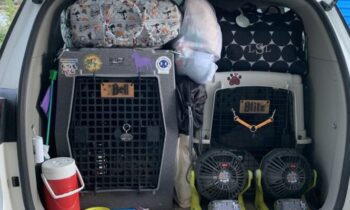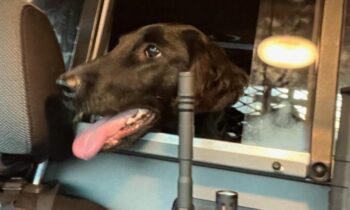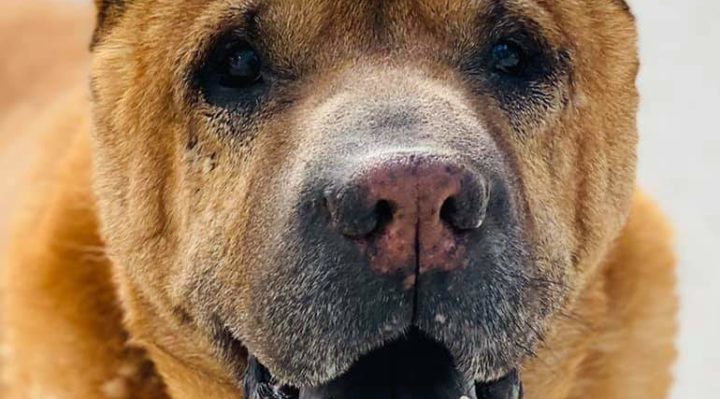
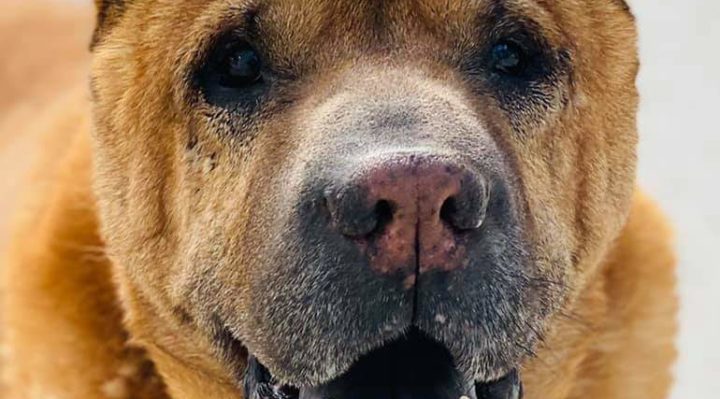
In the past few weeks, we’ve discussed the process of adopting a dog from a shelter or rescue organization—how to do your due-diligence before you go look, how to look, what to look for . . . and what could go wrong when you bring your new dog home. This week, I’ve asked dog professionals for their suggestions—how to get help with planning for and choosing your new animal, and what you need to have prepared at home before your new family member walks through your front door.
I have one suggestion of my own—a visit to your veterinarian for a well-pet check-up before your new dog enters your home. (Veterinary clinics in your area may offer this initial examination after an adoption at a discount or with no charge.) Don’t wait until your new family member has already met your family and friends, both animal and human. You need to know immediately that the pet is healthy and that there are no communicable issues that could affect other animals or family, friends, or neighbors.
It’s a matter of safety.
If your pet has arrived at the shelter or rescue from an unknown background or, especially, from far, far away—from another state, another country—you must make sure your veterinarian can confirm that your newly adopted animal is safe to be in contact right away with other pets, and even other humans. If health issues are found, your veterinarian can advise you on quarantining your new pet while treatment proceeds. Of course, the shelter or rescue organization from which your pet was adopted should be informed promptly of any existing or suspected issues the pet may exhibit at the veterinary exam. You decide, with your veterinarian’s counsel, how to proceed from that point.
Here are some additional suggestions from dog professionals.
Marni Dlin (Alberta) I am a person who rescues and adopts dogs. I am a retired dog trainer CPDT. What I see most is that people do not give the dog time to adjust. It takes time and patience.
The other big problem I see frequently is the dog getting lost within the first week.
● Double-leash on walks.
● Don’t leave the dog alone outside.
● Put security locks on doors and gates.
● Everyone in the household must be mindful of the dog’s whereabouts at all times.
Marilyn Marks (Connecticut) Don’t introduce [the new dog] to all your friends and neighbors at once. Don’t let all your kids swarm it at once. Take a week or two to get to know each other. That’s the short version!
Gwen Jones (California), former behavior consultant and dog training instructor
1) Assume the dog knows nothing.
2) Management—in the form of leash, ex-pen [exercise pen], crate and/or baby gates—helps show them the boundaries in your home.
3) Make slow, gradual introductions to current animals.
And really, this is a half-hour to an hour consultation with the new owners depending on their experience, the age and type of dog, the dog’s past experience, etc. But I think management is key.
Leslie McGavin Clifton (South Carolina), retired trainer. DO NOT rush out to the nearest dog park! This is a very common error with many negative repercussions. Give the dog time to adapt to the new home environment before venturing out into the big wide world. (I would never recommend a dog park anyway.)
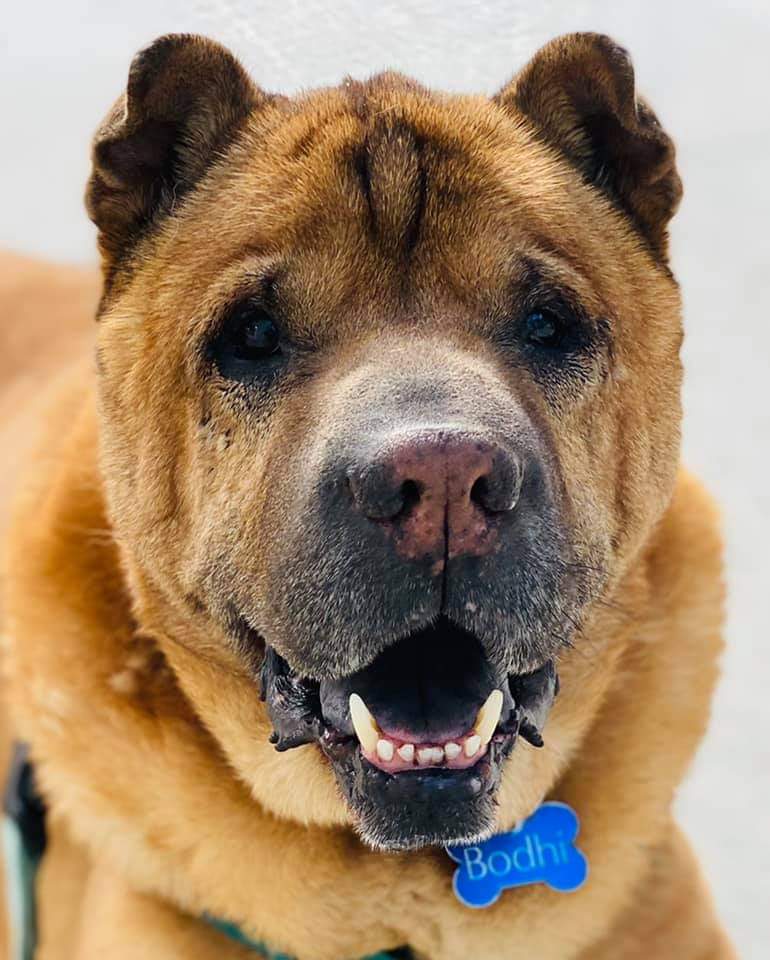
Photo by Mandy Lorian
Lauren Fetterman (California), current dog-walking business owner
● Let them decompress a little before hauling them all over the place.
● Hire a great trainer to get started on bonding and working with the dog.
● Provide management as you would with a puppy, so the dog learns house rules and expectations without a ton of freedom to form habits you’ll have to change later.
● Also, and I cannot stress this enough, start acclimating the dog to being home alone for short periods of time ASAP.
I personally think it’s worth it to hire a good trainer ahead of time to help with the selection process and getting your home ready before the dog arrives.
[I worked where] we had a fantastic behavior and training department that assessed the dogs and tried to make the best matches, but sometimes people came in who were insistent about [adopting] a certain dog, and not-great matches sometimes happened.
[With the assessments, there was] less room for error than is normally the case without, but if [potential adopters] went over their own wants and needs ahead of time and had assistance in selecting the right dog for them, I personally feel that better matches occurred.
Joyce Kesling (Florida) The previous comments all contain very important points. I’d like to emphasize, though: Ideally, you want your rescue/adoptable dog to be crate/confinement ready! As someone who has fostered, boarded, day-cared, and trained dogs, [I know that] one needs to effectively manage dogs, first and foremost.
I still actively train dogs and help owners resolve behavior problems. I’m certified through IAABC [International Association of Animal Behavior Consultants] in dog behavior, and do cat cases only on a very limited basis. In my experience, cat cases can be very difficult to resolve in multiple-cat homes coupled with an out-of-litter box problem! I’m concerned that, in many of these cases, medical issues are not fully explored.
Over the years, my rule for taking anyone’s dog and/or foster dog [is that] the dog must be kennel ready. I cannot bring an untrained rescue dog into my environment where other dogs, including mine, might be affected by a new dog’s behavior. Rescue dogs are rescue dogs, in most cases, because they did not successfully adapt to living in their previous home environment. This is not just my conclusion, it is fact!
Now to give credit where credit is due. Dr. Ian Dunbar hugely influenced my perspective in many ways. In my opinion, I simply perfected many of the protocols he introduced for raising well-behaved puppies! Dr. Dunbar emphasized the importance of management—setting puppies up to succeed. He put part of this responsibility on breeders. Good breeders, in his opinion, prepare puppies by introducing them (while still in the breeder’s care) to proper elimination substrates, individual confinement training, toys/chews. And likely one of the most important lessons comes in handy when owners take their new puppies home: Take advantage of the natural ‘following’ behavior in the puppy. It helps when you introduce leads later and can prevent learned on-leash misbehavior.
My practiced procedure for new dogs/fosters is, first, crate confinement. I keep their lead, harness, and head collar (beginning tools) right next to the kennel, but far enough away that the dog can’t pull them into the kennel and chew! I begin taking every dog out on lead to the yard (always fenced) to learn to go potty on lead, and I begin teaching “go” on signal. After they’ve relieved themselves, I either walk them around with loose lead or release them. This begins the process of the first job dogs should learn—where to go potty and what consequence follows when they go! There’s more detail in this process that I won’t include here.
Part of being loose allows the puppy socialization opportunities, always under supervision. Period.
Teaching dogs continues from here, but it must always begin with management. You must set your rules and boundaries so that both your needs and your puppy/dog’s needs are met.
You should always reject using any form of teaching/training that might cause your puppy/dog to become fearful. Once you’ve gone down this path, you and your dog may never recover from the damage. So when choosing your trainer/behavior consultant/specialist, know where to look and understand the difference in possible outcomes. The training/behavior specialist should be knowledgeable enough to explain the difference. You still need to be careful, given that the industry is unregulated.
I rarely trust what people tell me about their dogs upon first meeting. Humans and dogs are similar: To form lasting relationships, we require time to get to know people. The same requirement applies to dogs that we don’t yet know. This explains why owners can benefit from using professionally trained, behaviorally educated people to work with their dogs. To properly teach dogs requires more than sit, down, and stay training! If this were also not true, we’d likely see even fewer dogs in rescue/shelters.
And keep away from dog parks. Taking your dog to dog parks can have the same detrimental effect as allowing your child to get mixed up with the wrong crowd!
Colette Kase (Mexico), puppy trainer, retired behaviorist, dog writer. There are at least a hundred ways to adopt and dogs to adopt.
Arrange a meeting with a properly qualified trainer before bringing your dog home. Talk to them before doing that and get their advice based on the specifics of the dog or puppy. Arrange a follow-up appointment with them. General advice isn’t necessarily helpful, since adopting a 12-week-old terrier cross is a completely different experience than adopting a five-year-old border collie.
Two things. First, I do think trainers should be giving discounts for adopted dogs. It’s a very easy ethical decision to make. Either give a discount or give a percentage to solution-based welfare programs. Giving low-cost community training options to people of low income, with a sliding scale of fees, is also important.
Second thing. I worked in a large sheltering organization for many years. I’ve worked in animal welfare in some way or another most of my life. I’ve learned so very much through all of it. I’ve done everything from establish an entire behavior department for a very large and wealthy re-homing organization to shoveling excrement in a run-down “rescue” in Central America.
Sheltering almost makes it impossible to achieve long-term solutions. It’s a self-perpetuating industry. Most working in it have good intentions. Unfortunately, it is contributing to the problem.
There are simple ways to stop pet overpopulation and the numbers of unwanted dogs, and we should all focus on organizations that do these things:
● Education
● Free sterilization
● Subsidized veterinary/behavioral health care
● Political lobbying for legislation and enforcement
Hilary Lane (Colorado) POD To The Rescue (from Summit Dog Rescue, Boulder, Colorado) has some excellent suggestions on how to successfully navigate bringing home a rescue dog by avoiding the many mistakes adopters may make. Adopters, fosters, and rescues can glean some great information from it. On one podcast, Patricia McConnell discusses the trauma that these dogs have experienced and why taking it slow is important, as other commenters have noted.
Other podcasts discuss separation anxiety, the need for food rewards, making dogs feel safe, and many additional topics relevant for rescue dogs and the issues they may have. Not all [dogs] can tolerate crating because of their background, for example, so there are discussions about what to do instead.
https://podcasts.apple.com/us/podcast/pod-to-the-rescue/id1560707692
People can listen to the episodes wherever they get their podcasts.
Facebook https://www.facebook.com/PodToTheRescue/
Instagram and Twitter @podtotherescue
Em E Wolf (Colorado) CPDT-KA, Brilliant Pup—Enlightened Training for Humans and Dogs, Director of Summit Dog Rescue, Boulder, CO
Kat Camplin (California), I just send everyone this information:
https://www.rescuesmart.net/
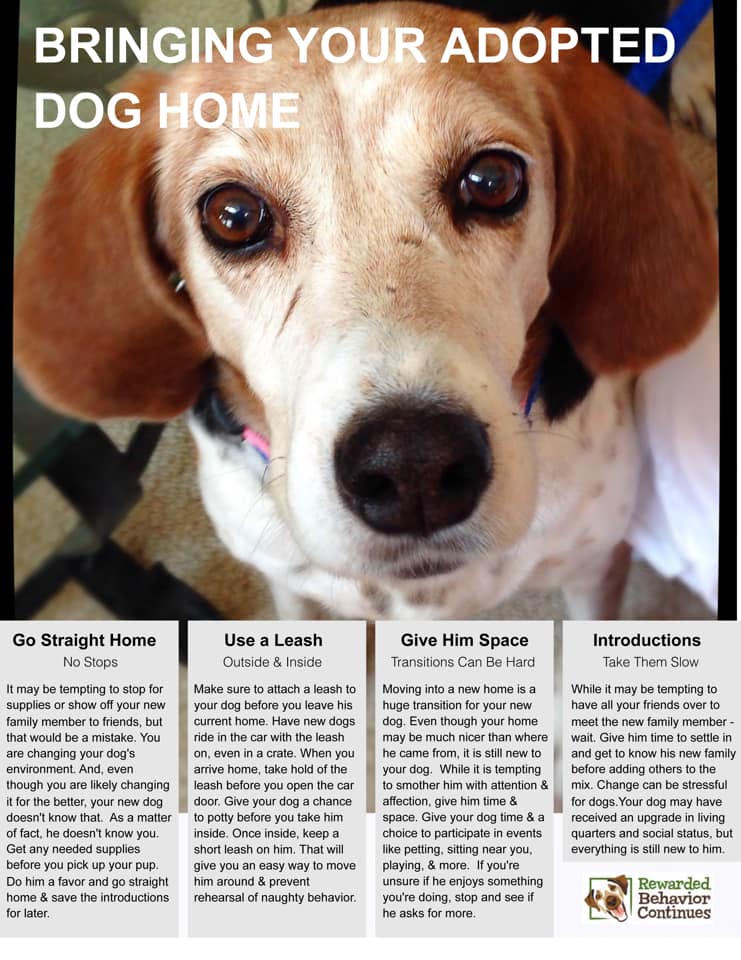 Courtesy of Marge Rogers KPDT-CA (North Carolina)
Courtesy of Marge Rogers KPDT-CA (North Carolina)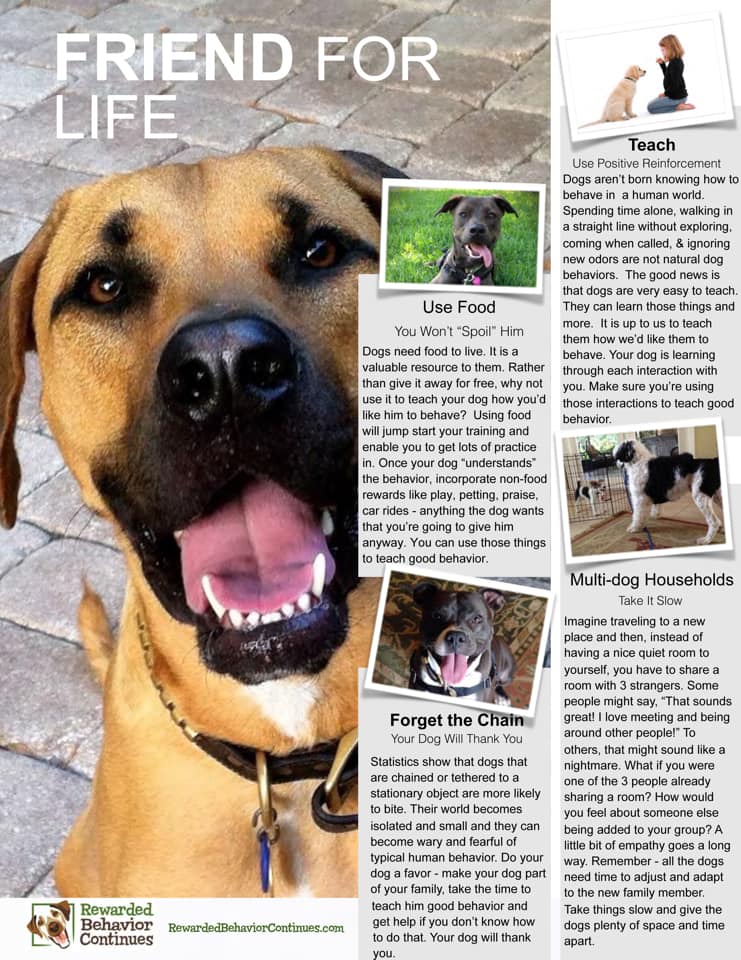
Courtesy of Marge Rogers KPDT-CA (North Carolina)

